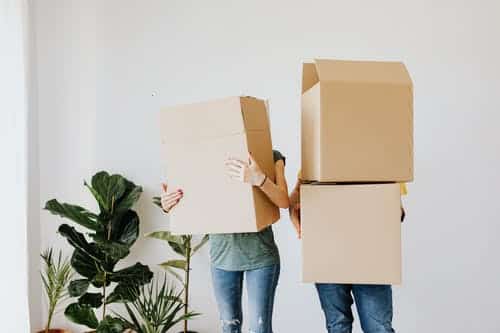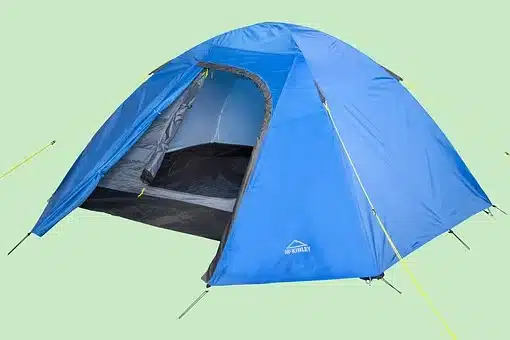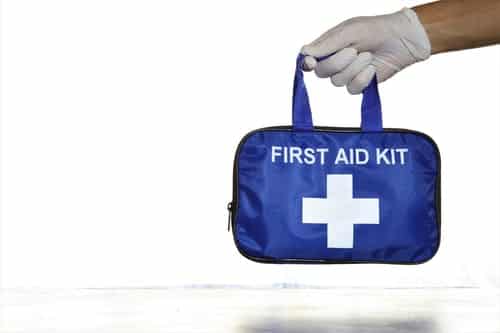Preparing for Emergencies as a Couple
 We all need to get prepared in case of an emergency in our area. However, most guides, articles, and products are geared towards families. In honour of our Valentine’s Day sale (today until February 19, 2021), we’re going to shift the conversation towards preparing for emergencies as a couple. In the case of young professionals and students, this usually means a smaller budget and wayyyy less storage space. For older couples, it might be a matter of finding options that don’t go over the top for two people.
We all need to get prepared in case of an emergency in our area. However, most guides, articles, and products are geared towards families. In honour of our Valentine’s Day sale (today until February 19, 2021), we’re going to shift the conversation towards preparing for emergencies as a couple. In the case of young professionals and students, this usually means a smaller budget and wayyyy less storage space. For older couples, it might be a matter of finding options that don’t go over the top for two people.
Location, location, location
We’ve written posts about where to store your emergency kit (here), but this can be extra tricky if you don’t own property or if you live in a small place. Preparing for emergencies as a couple may require some imaginative planning. My partner and I share an 850 square foot basement suite with a dog, two birds and a few too many hobbies. It can be a struggle to find space for anything – hiding gifts, new books, and yes, emergency supplies.
Useful suggestions
Because I work in emergency preparedness, our kit was a priority for us (okay, for me) so we dedicated as much space as we could to a large tote of general supplies and a few buckets of freeze dried food. This obviously isn’t practical for everyone. Nevertheless, there are options for those looking to get prepared without much wiggle room.
Use your network! Do you know someone nearby with some extra space or an existing kit? Ask if you can add supplies to their stash and coordinate an emergency plan. Try to stick with contacts that are within walking distance in case roads are dangerous. Then all you and your partner will need is a go-bag with enough supplies for 24-72 hours in case it’s not feasible to go right away. Two person kits are part of our ‘Get Prepared Together’ sale until February 17.
Did you know?
 Most people already have an emergency kit in their homes without realizing it. If you have camping gear, just add food, water and personal items and you have a kit. That way you don’t take up extra space by doubling up on items like tents, stoves or sleeping bags. If using this space-saver, be sure to keep all of your gear in one place so it’s easy to get to and move if needed.
Most people already have an emergency kit in their homes without realizing it. If you have camping gear, just add food, water and personal items and you have a kit. That way you don’t take up extra space by doubling up on items like tents, stoves or sleeping bags. If using this space-saver, be sure to keep all of your gear in one place so it’s easy to get to and move if needed.
If you are new to the neighborhood and don’t like the outdoors, the main option left to you is to keep your kit compact. There are some good options like the Individual Essentials Kit, or the Legion Kit, that are built with this need in mind. But be aware that no micro-kit is going to have the same scope as their larger cousins. Supplement these options by stocking extra of your everyday pantry items and rotating through them.
What to keep in your kit
We’ve discussed emergency kits at length in the past. For the most part, when preparing for emergencies as a couple, a survival kit should contain all the same things as a family or individual kit. You’re still human, so you’ll need to cover the basics:
Sustenance:
 Water – 2 Liters per person each day for drinking and 2 for cooking and sanitation. Here’s more information on the best ways to prepare water.
Water – 2 Liters per person each day for drinking and 2 for cooking and sanitation. Here’s more information on the best ways to prepare water.
Food – Ideally aim for 1600 – 2200 calories per person each day, including decent nutrition and protein. During our Get Prepared Together sale we’re offering discounts on a week’s worth of food for two people here. It even has a 25 year shelf life! New to freeze dried food? Check out our 4 part blog series on it to learn why it is the best option for most kits.
Comfort Necessities:
Warmth and Shelter – Hopefully you’ll be able to stay in your home in the event of an emergency. However, to be on the safe side, it is prudent to pack a shelter. If you don’t camp, your best option is likely a Tube Tent. Another option is to pick up a cheap multipurpose tent from a local supplier.
Sanitation – In some emergencies (especially earthquakes) water might not be coming through the pipes and toilets may not flush. You might also be sheltering in place outside. In these cases you’ll want to have garbage bags as a minimum to help you contain and dispose of waste. If you have the room, a full emergency toilet kit is also an option.
Other:
 First Aid – Every home should have a first aid kit, even if they don’t have a general emergency kit. Here are all our options. For space-saving couples, I would highly recommend the Essential First Aid Kit. It’s very handy and compact without missing supplies.
First Aid – Every home should have a first aid kit, even if they don’t have a general emergency kit. Here are all our options. For space-saving couples, I would highly recommend the Essential First Aid Kit. It’s very handy and compact without missing supplies.
Personal Items – If you have the space, always try to include some personal items in your kit. At a minimum this would be a change of clothes, some cash and toothbrush/toothpaste. It might also include a USB stick with copies of important documents or family photos, a change of shoes, spare glasses/medicine and anything else that would be difficult to live without.
Couple-specific tip – In 99% of cases a kit for a couple will line up with the recommendations for the general population because you are both still people, and people need certain things. This being said, I do have one couple-specific tip for you:
In most emergencies you will be stuck, possibly for days, without electricity. This means a lot of time being bored, together and surrounded by candles or other mood lighting. Pack accordingly.
Summary
If you’re preparing for your future together, take the time to ensure it is a safe one. Pack a kit, talk to your neighbours and use the above tips and tricks to save space and money. Were you able to keep supplies compact and under budget? Tell us about your kit in the comments!
Thank you for reading.
This article was written by Zenia Platten – author and emergency preparedness professional.
